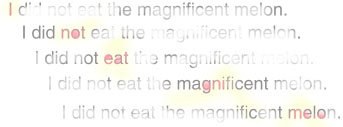

 |
Greg Kochanski |  |
The Humanities has been a lonely subject. Unlike in the sciences, collaboration is rare. Some universities still define tenure in the Humanities in terms of the number of single-author books and papers a professor writes. The assumption is that collaborations are rare, and in fact not valuable.
An up-coming idea in the digital humanities that could lead to dramatic changes is the computer-enhanced annotation and discourse on texts. With it, scholars can attach information and interpretations to literature, somewhat like the Talmud. This could lead to a qualitative improvement in scholarship, because human minds are leaky: in the time it takes to find a relevant insight in a paper library, other not-yet-connected details fade away and a synthesis may never be reached. Instead, the faster access to digital annotations (the ability to rapidly search for that half-remembered bit) may allow all the necessary pieces to be in the same mind at the same time, and allow insights that might never otherwise have occurred.
Or, it might not, if the limiting factor is not so much the leakiness of scholarly minds, but rather the intrinsic difficulty of making use of someone else's ideas. We all have different associations and experiences, so John's view of a chapter may fundamentally disagree with Alices. It may be that their ideas can only displace one another, rather than adding to eachother.
This ties back into the tenure question: if John and Alice can only compete for space, then a collaboration between them will probably be less than the sum of the parts. The result would be a patchwork of incompatible ideas. We shall see. Doing humanities digitally will be an experiment. The technology now allows fine-grained collaboration: the real question is whether or not humans can make use of it in the humanities.
While that kind of computer-enhanced scholarship will be interesting to watch, it is only one of several areas that are being transformed. Film is one, of course: large portions of current films are generated or modified digitally to create effects unimaginable in the era of cameras, costumes and actors. For one recent example, I can point to the skeleton crew scenes in Pirates of the Caribbean as a seamless fusion of live actors and digital modifications that create visible myths which previously existed only in our imagination.
The technology that makes movies is rapidly becoming cheaper and simpler. What requires millions of dollars is turning into thousands, soon to hundreds. Perhaps more importantly a new social phenomenon has begun. People donate their time and their computers to collective projects in the public domain. We see this in screen-savers for scientific research (examples are SETI at Home and ClimatePrediction.net) where intensive computations are farmed out to thousands of personal PCs whose owners donate their idle minutes.
The social innovation also includes loosely organized groups working together on common projects, like the free software movement (which incidentally created some of the software used to make those state-of-the-art movies). That same kind of loosely distributed social network should also be able to make art and movies, if it could take root among artists instead of programmers. Soon, we will see movies that are not created by anyone in particular, but are the gradual evolution of a concept in a loose group of contributors. Will they be art? How will the creative process work? It remains to be seen, but a previously unknown process for making art may appear appear before our eyes in the next few years.
Will appear? Perhaps a better term is "has appeared." Screensavers, long a haven for flying toasters and frantic motion are beginning to show their possibilities as an art form. The combination of a full color palette and dynamics that this medium supports would have led Luminists like Moran to sell their souls for such paints. Screensavers are a technically hard art form, because the code must be written efficiently and elegantly, and combined technical and artistic talent is always rarer than either separately. Still, Tarbell, with his "Substrate" has the feel of art and displays a sense of the medium's possibilities.
Finally, I'll predict that annotated texts will escape from their authors and become part of the intellectual common. A digitally annotated text is no longer like a book, no longer something that can be read but not modified. Instead, each subsequent scholar can take it, modify it, add annotation, add discussion notes about why he/she changed some annotations and place it back in the public domain. Such a digital text could grow --if agreement can be found -- over the decades or centuries, authored by a loose coalition. If so, it would be the most dramatic sociological change in the Humanities in recent history: the individual author may become history.
| [ Papers | kochanski.org | Phonetics Lab | Oxford ] | Last Modified Sat Nov 17 17:12:22 2007 | Greg Kochanski: [ Home ] |